Opening
Click/tap photo to enlarge
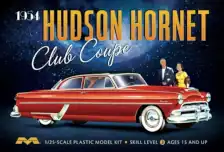 1954 Hudson Hornet Club Coupe Box Art
1954 Hudson Hornet Club Coupe Box Art
This is the box art for the '54 Hudson Hornet Club Coupe I'm building. It can be viewed on Scalemates.
- Brand: Moebius Models
- Title: 1954 Hudson Hornet Club coupe
- Number: 1213
- Scale: 1:25
- Type: Static Model Kit
- Released: 2015 New Tool
- Package: Rigid Box Top Opener
- Barcode: 0854006005190 (EAN)
- Topic: Hudson Hornet >> Cars (Vehicles)
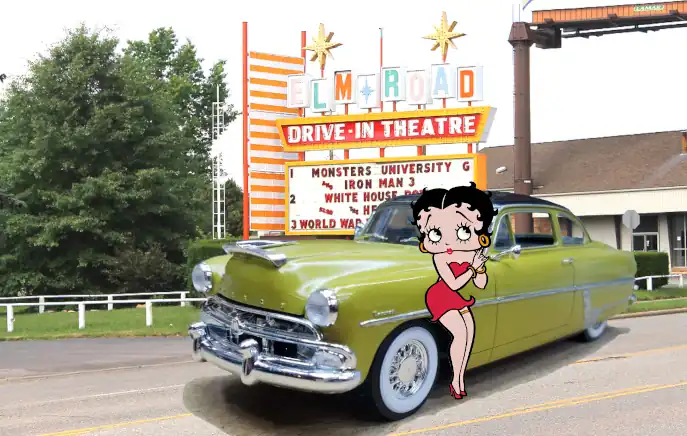

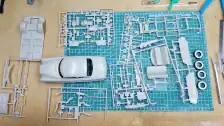 All parts are out of the box and inspected
All parts are out of the box and inspected
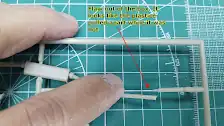 Exhaust pipe flaw out of the box
Exhaust pipe flaw out of the box
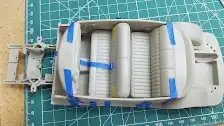 Dry fitting the interior
Dry fitting the interior
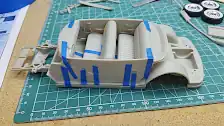 Another view of the mocked up interior
Another view of the mocked up interior
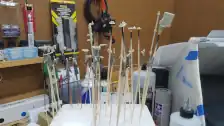 Parts getting ready for primer
Parts getting ready for primer
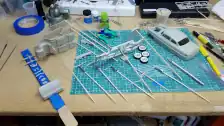 Parts getting ready for primer
Parts getting ready for primer
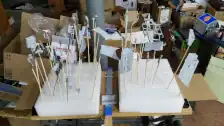 All parts, except the body, are primed
All parts, except the body, are primed
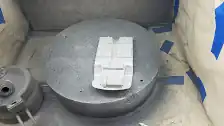 Floor pan primed
Floor pan primed
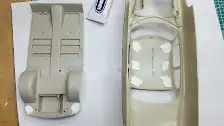 Filling injector pin marks
Filling injector pin marks
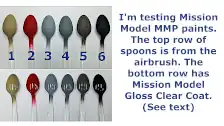 Test spoons for color tests
Test spoons for color tests
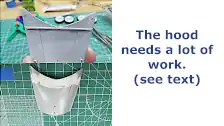 The hood needs a lot of work
The hood needs a lot of work
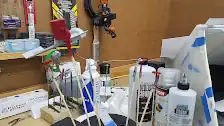 Engine parts are painted
Engine parts are painted
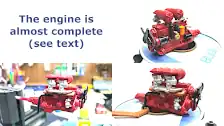 Engine is almost complete
Engine is almost complete
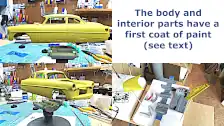 Body gets first coat of paint
Body gets first coat of paint
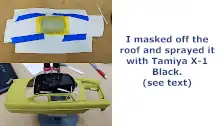 Masked the roof and painted
Masked the roof and painted
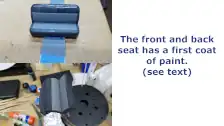 Front and back seat are painted two tone
Front and back seat are painted two tone
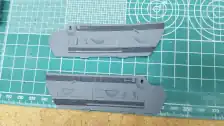 Started detailing the interior door panels
Started detailing the interior door panels
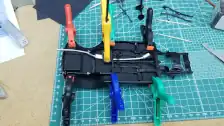 Exhaust pipe and drive shaft are installed
Exhaust pipe and drive shaft are installed
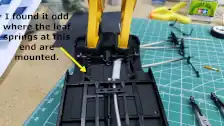 Attaching the rer axle housing and leaf springs
Attaching the rer axle housing and leaf springs
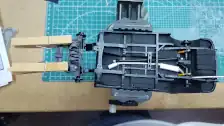 Front suspension being installed
Front suspension being installed
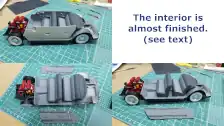 Interior is almost finished
Interior is almost finished
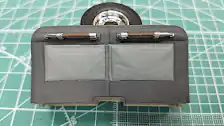 Back of the front seat is detailed
Back of the front seat is detailed
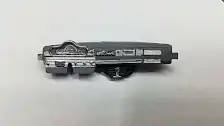 Dashboard is detailed
Dashboard is detailed
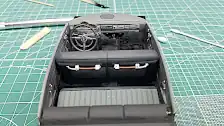 Interior is finished
Interior is finished
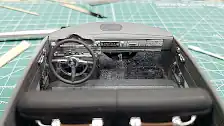 Interior is finished
Interior is finished
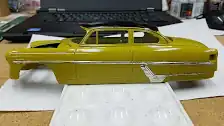 Starting to apply the body chrome
Starting to apply the body chrome
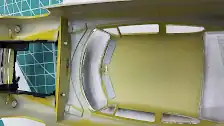 Sun visors, dome light and rear view mirror installed
Sun visors, dome light and rear view mirror installed
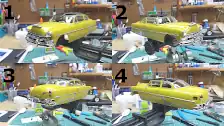 Body is almost finished - 5-Photos
Body is almost finished - 5-Photos
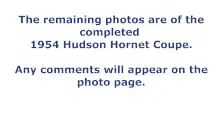 End of build - Remaining photos are completed build
End of build - Remaining photos are completed build
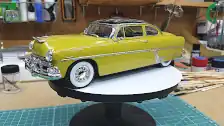 Completed build
Completed build
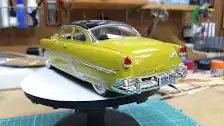 Completed build - View from right rear corner
Completed build - View from right rear corner
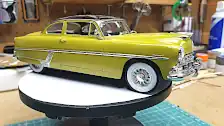 Completed build - View from left front
Completed build - View from left front
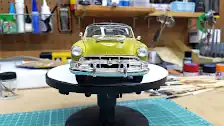 Completed build - Front view
Completed build - Front view
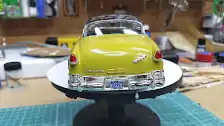 Completed build - Rear view
Completed build - Rear view
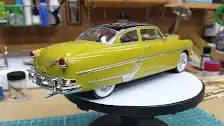 Completed build - View from right rear
Completed build - View from right rear
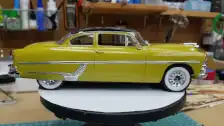 Completed build - Right side
Completed build - Right side
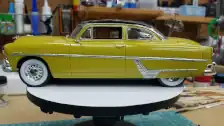 Completed build - Left side
Completed build - Left side
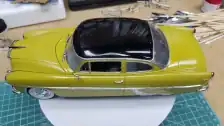 Completed build - Looking down from the left side
Completed build - Looking down from the left side
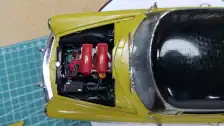 Completed build - Looking down at the engine
Completed build - Looking down at the engine
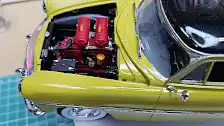 Completed build - Engine from the left side
Completed build - Engine from the left side
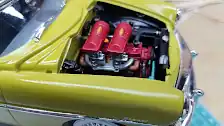 Completed build - Engine from the right side
Completed build - Engine from the right side
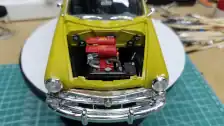 Completed build - Engine from the front
Completed build - Engine from the front
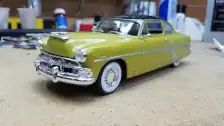 Completed build - View from left front
Completed build - View from left front
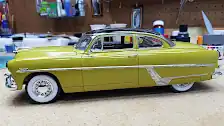 Completed build - Leftt side view
Completed build - Leftt side view
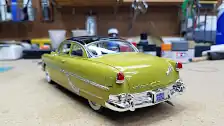 Completed build - Left rear corner
Completed build - Left rear corner
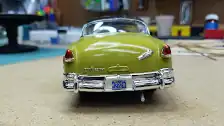 Completed build - Rear view
Completed build - Rear view
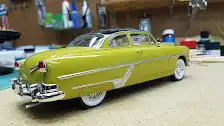 Completed build - Right rear corner
Completed build - Right rear corner
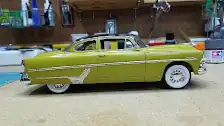 Completed build - Right side
Completed build - Right side
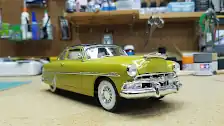 Completed build - Front right corner
Completed build - Front right corner
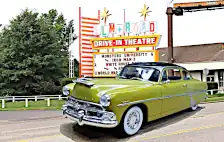 Completed build superimposed in front of a drive-in theatre
Completed build superimposed in front of a drive-in theatre
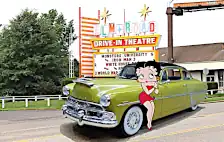 Completed build superimposed in front of a drive-in theatre with Betty Boop
Completed build superimposed in front of a drive-in theatre with Betty Boop
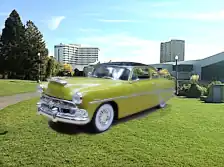 Completed build superimposed with city line in the back ground
Completed build superimposed with city line in the back ground
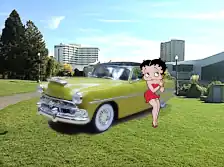 Completed build superimposed with city line in the back ground with Betty Boop
Completed build superimposed with city line in the back ground with Betty Boop
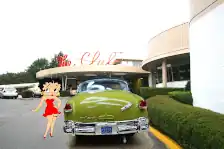 Completed build superimposed outside of 'The Club' with Betty Boob
Completed build superimposed outside of 'The Club' with Betty Boob



